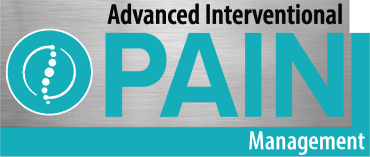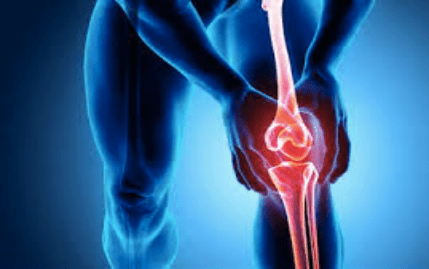-
- Arthritis
- Osteoarthritis (OA).
OA is the most common form of arthritis which is caused by the breakdown of cartilage that cushions the ends of the bones where they meet to form joints. Without the protective layer, the bones rub together, causing stiffness, pain, and loss of joint movement. Osteoarthritis is the most common cause of knee pain in people 50 years or older. Among those with knee osteoarthritis, knee pain is a major reason for knee replacements.
1.2 Rheumatoid arthritis (RA)
RA is chronic inflammatory disease that causes the immune system to mistakenly attacks the membrane that lines the joints. The result can be joint damage, pain, swelling, inflammation and loss of function. RA commonly affects joints on both sides of the body. If one knee is affected, the other knee is likely affected as well.
1.3 Juvenile Arthritis
A type of arthritis conditions that affect children age 16 years old or younger. There are several types of juvenile arthritis that cause knee pain and swelling.
1.4 Reactive Arthritis
A chronic form of arthritis that often occurs following an infection of the genital, urinary or gastrointestinal system. The large joints are most often infected especially the shoulders, hips and knees.
1.5 Lyme Disease
An infectious disease that causes a rash, joint swelling and flu-like symptoms. It Is acquired from a bite by tick infected with a bacterium called B. burgdorferi. The knee is often the first joint affected by Lyme disease.
1.6 Lupus
A chronic autoimmune disease which causes a faulty immune system to release blood proteins that attack healthy tissues. Body wide inflammation can occur in the knee and other joints.
1.7 Gout
Gout is a form of arthritis that occurs when too much uric acid builds up in the bloodstream. The acid turns into needle-like crystals in tissues of the body, including the joints. Swelling in the big toe is usually the first symptom of gout.
1.8 Infectious Arthritis
Infectious arthritis is also called a septic arthritis which is caused by an infection within the joint. Infectious arthritis is often caused by bacteria that spread through the bloodstream to the joint. Sometimes it is caused by viruses or fungi. Knees are most commonly affected.
1.9 Psoriatic Arthritis
A form of arthritis that occurs along with psoriasis is psoriatic arthritis. This condition causes serious joint pain and stiffness, along with swelling and loss of joint mobility. Psoriatic arthritis can affect any joint in the body, even the fingertips and spine.
- Popliteal (Baker’s) cyst
Baker’s cysts arise from a damaged posterior knee capsule, which may be due to a hyperextension injury, osteoarthritis, direct trauma, or congenital causes. Cysts may cause posterior knee pain or remain asymptomatic.
- Bursitis
The inflammation of the affected the small, fluid-filled sacs of the joints called bursa. The bursa become inflamed usually due to repetitive motion. The most common sites for bursitis are the shoulder, hip, and elbow, but it can also affect the knee, base of the big toe, and heel.
- Hemochromatosis
Hemochromatosis is an inherited condition that causes the body to absorb too much iron from food. Excess iron becomes stored in the organs, and this results in joint pain, weakness, and fatigue.
- Patellofemoral Pain Syndrome (PFPS)
A pain which occurs in the front of the knee and around the patella, or kneecap. It is sometimes called “runner’s knee” or “jumper’s knee” since it is common in people who participate in sports—particularly females and young adults—but PFPS can also occur in non athletes. The pain and stiffness caused by PFPS can make it difficult to climb stairs, kneel down, and perform other everyday activities.
Diagnosing the Cause of Knee Pain
A thorough examination is necessary for an accurate determination. The examination should include an assessment of whether the pain actually stems from the knee. Sometimes knee pain can be referred pain from another source, such as a hip injury. When making a diagnosis, the provider will consider information that includes the following: patient characteristics, patient history, results of a physical examination, and results of imaging and other tests.
Non Surgical/Minimally Invasive Treatment for chronic knee pain
The treatment options described below are based on guidelines from the different professional health organizations: American Academy of Orthopedic Surgeons (AAOS), American College of Rheumatology (ACR), American Association of Anesthesiologists, Centers for Disease Control and Disease Prevention (CDC), and the Department of Health and Human Services (DHHS). The choice of treatment is guided by the nature and cause of the pain and the patient’s preference.
RICE (rest, ice, compression and elevation)
This can work for acute pain, but treatment is different for chronic pain where rest may weaken muscles that need strengthening to reduce or eliminate the pain.
Exercise and physical therapy
It is a natural inclination to rest or resist moving the joint when in pain, however, in case of knee OA, exercise can actually make the knee feel better. Low impact and aerobic are exercise that will move the body without placing unnecessary stress on the joint. Cycling, using an elliptical trainer, and swimming are all great examples of low impact exercises that avoid high-impact stresses such as twisting, jumping, or deep bending. Working with a physical therapist can also help alleviate knee pain. Physical therapists can evaluate the way people are walking and moving to help optimize function and avoid excessive strain which is beneficial for the knees as well as the rest of the body.
Lifestyle changes
Weight management and activity modification are lifestyle changes that can reduce pain. Long-term weight loss between 10–20% of baseline body weight showed substantial clinical and mechanistic benefits: significantly improved physical health related quality of life (HRQL), and a clinically important reduction in pain and improvement in function. Moreover, activities such as going up and down stairs, climbing ladders, or squatting down causes more strain to the knee. If certain activities or exercises cause knee pain to flare up, finding alternative ways to perform these activities can help reduce the frequency of knee pain.
Complementary therapies
Some people find relief using massage, biofeedback, relaxation, meditation, acupuncture, yoga, or visualization.
Medication
Medication used in treating chronic knee pain includes: acetaminophen, nonsteroidal anti-inflammatory drugs (NSAIDS), steroids, and opioids. NSAIDs work by reducing painful inflammation without the use of steroids or narcotic opioids. Example of NSAIDS are ibuprofen. Naproxen, celecoxib, meloxicam, and others. While NSAIDs are safe for many people to take for a short duration, they are not safe for everyone depending on medical problems and other medications. Topical form of NSAIDS are available and are recommended for elderly patients and who are at risk for adverse gastric, cardiovascular and renal effects.
For those patients who have contraindication to NSAIDs, or other therapies are ineffective or have no surgical options, opioids may be prescribed. Although opioids showed significant benefit in reducing pain, there are a lot of concerns regarding potential adverse effects, high risk of toxicity and dependence. It is important to discuss with your doctor to determine if these medicines are right for you.
Corticosteroid Injections
Corticosteroid injections or steroid injections into the knee joint can provide short duration pain relief in knee arthritis. Cortisone is an anti-inflammatory medication that can help reduce acute aggravation in the joint, however it does not reverse or restore damaged cartilage and is less effective for chronic daily pain or more advanced forms of arthritis.
Genicular Nerve Blocks
This treatment blocks pain signals that the genicular nerves transmit between the knee joint and the brain. This is first done with an injection of an anesthetic for short-term relief. If it is effective, the patient can get longer-term relief with a nonsurgical procedure called radiofrequency ablation. This procedure generates heat to coagulate the proteins in the nerve, which stops the pain signals.
Assistive Devices
The use of assistive device such as a cane or a walker can help with a flare in knee pain. These devices can shift the body’s center of gravity away from the affected side and reduce the strain on the joint. It also helps reduce the risk of falls if the knee gives out due to pain.
Braces
Knee brace can help stabilize the knee. A brace might help reduce pain by shifting the weight off the most damaged portion of the knee. Wearing a brace can improve your ability to get around and helps you to walk farther comfortably.
Why should I see a pain management specialist?
Pain management serves an essential role in managing chronic knee pain both for lessening discomfort and aiding in recovery. The pain management specialists’ employ range of pain relief options and comprehensive treatment through multimodal approaches. Pain management specialists may also consult with other health care providers such as your primary care physician, orthopedist, rheumatologist or physical therapist in order to diagnose and provide comprehensive care.
Advanced Interventional Pain Management providers work with patients to help diagnose and identify the source of pain, treating the pain safely and effectively with few side effects as possible. Patient may not necessarily need to take medication to manage their pain. In fact, pain management is generally more successful when a comprehensive approach is used, with or without medications.
If you are struggling with knee pain, please call (501) 321-PAIN to schedule a consultation with one of our specialists.
References
American Academy of Orthopaedic Surgeons (AAOS). (2013). Clinical practice guidelines on treatment of osteoarthritis of the knee. http://www.orthoguidelines.org/topic?id=1005
American College of Rheumatology / Arthritis Foundation. (2019). Guideline for the management of osteoarthritis of the hand, hip, and knee. https://www.rheumatology.org/Practice-Quality/Clinical-Support/Clinical-Practice-Guidelines/Osteoarthritis
Arthritis Foundation. (n.d.) When knee pain may mean arthritis. https://www.arthritis.org/health-wellness/about-arthritis/where-it-hurts/when-knee-pain-may-mean-arthritis
American Society of Anesthesiologists. (n.d.). Knee pain. https://www.asahq.org/madeforthismoment/pain-management/types-of-pain/knee-pain/
Beuteler, A., & Fields, K. (2020). Approach to the adult with knee pain likely of musculoskeletal.https://www.uptodate.com/contents/approach-to-the-adult-with-knee-pain-likely-of-musculoskeletal-origin
Centers for Disease Control and Prevention (CDC). (2016). CDC guideline for prescribing opioids for chronic pain — United States, 2016. DOI: http://dx.doi.org/10.15585/mmwr.rr6501e1external icon.
Department of Health and Human Services (HHS). (2019). Pain management best practices inter-agency task force report: updates, gaps, inconsistencies, and recommendations.

